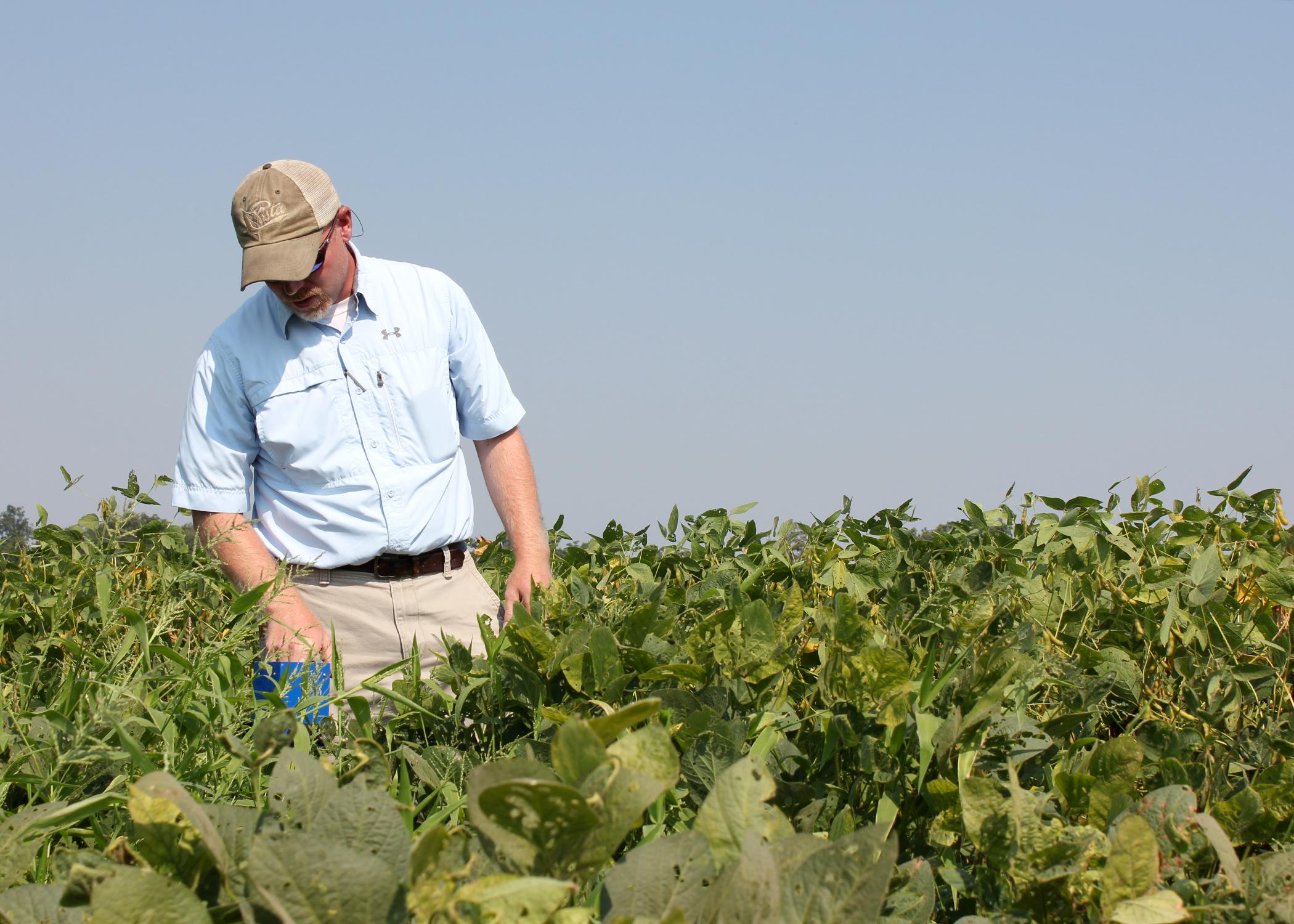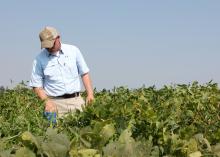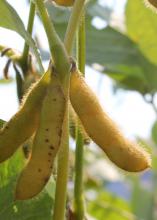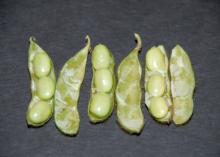Information Possibly Outdated
The information presented on this page was originally released on September 12, 2013. It may not be outdated, but please search our site for more current information. If you plan to quote or reference this information in a publication, please check with the Extension specialist or author before proceeding.
Base irrigation decisions on maturity, soil moisture
MISSISSIPPI STATE – Knowing when to say when is key to successful soybean irrigation that conserves water and money while producing peak yields.
As hints of water regulation on the horizon in Mississippi make water conservation a pressing issue, Mississippi State University has stepped up efforts to aid growers with irrigation decisions.
Trent Irby, soybean specialist with the MSU Extension Service, said soybean irrigation should stop after there is adequate soil moisture to ensure the seeds reach maximum size.
“Terminating irrigation too soon can result in decreased seed size, which ultimately means maximum yield potential may not be reached,” Irby said. “The goal is to time the last irrigation so that adequate soil moisture is present to allow the crop to reach its maximum potential.”
Bobby Golden, Mississippi Agricultural and Forestry Experiment Station soybean agronomist at the Delta Research and Extension Center in Stoneville, said the first and most critical step in deciding when to terminate irrigation is to properly determine the plant’s growth stage.
“Make a growth stage determination by checking multiple locations in the field,” Golden said.
Crop experts use a scale of 1-8 to describe a soybean plant’s reproductive maturity stage, or “R.” R5.5 refers to plants with seedpods containing soybeans that fill half the space inside the pod cavity. R6 soybeans are big enough to touch each other and completely fill the pod cavity. At R6.5, the pods are beginning to change color, and the seeds have begun to recede from the fleshy pod membrane. Pods have reached their mature color at R7, and the plants are fully mature at R8.
Determining soybean maturity level takes practice, and the grower must also know if the variety is “determinate” or “indeterminate.”
“If you are looking at an indeterminate variety, focus on the pods in the upper four nodes of the plant, as indeterminate varieties begin maturing at the bottom of the plant and maturity progresses upwards,” Irby said. “Determinate varieties mature uniformly up and down the plant.”
While factors such as irrigation method used, soil texture and environmental conditions should all be considered, growers can usually stop irrigating at the R6.5 growth stage, Golden said. Soybean seed simply do not take up more water after this point.
“Irrigation should continue until adequate soil moisture is present to maximize seed size and ensure that the maximum yield potential is reached,” he said. “On the other hand, irrigating the crop when it doesn’t need it may be a waste of time and resources.”
Jason Krutz, Extension Service and MAFES irrigation specialist, said a soil moisture meter is the best tool to accurately determine moisture content of the soil.
“It costs about $500 per location to install a moisture sensor setup, and we’d like to see them paired with irrigation,” Krutz said. “But once you have these moisture meters in your field, they can pay for themselves in one year by eliminating at least one irrigation.”
Krutz said many growers have used moisture meters to avoid two unnecessary irrigations, one in the early season and another in the late season.
Irrigation water was plentiful in the Mississippi Delta in years past, but measures are on the horizon to limit how much farmers can use in the future. The careful application of science today can help producers grow crops with maximum yield and efficient water use.
“We don’t want to leave yield out in the field by terminating irrigation too early,” Irby said. “However, proper timing of irrigation termination can help us save money and resources while ensuring that maximum yield potential is reached.”








